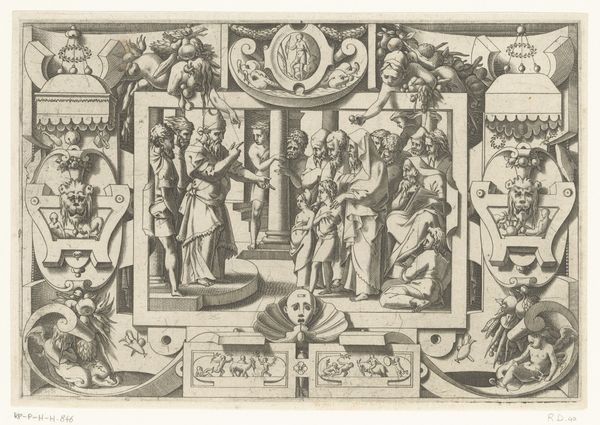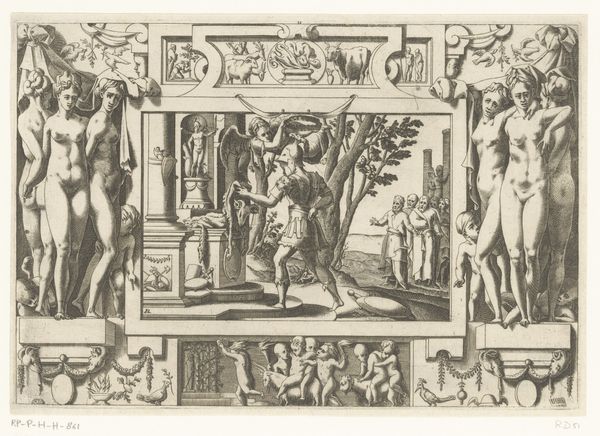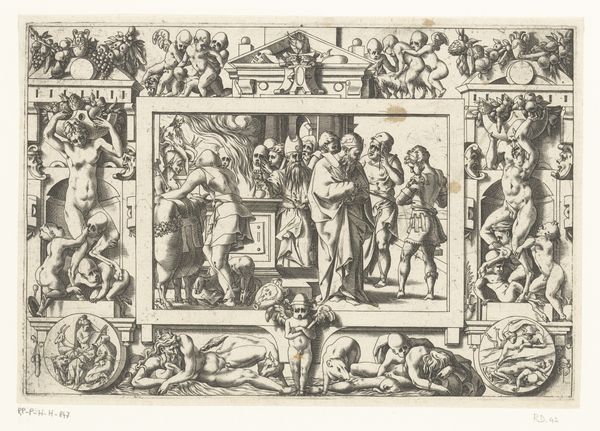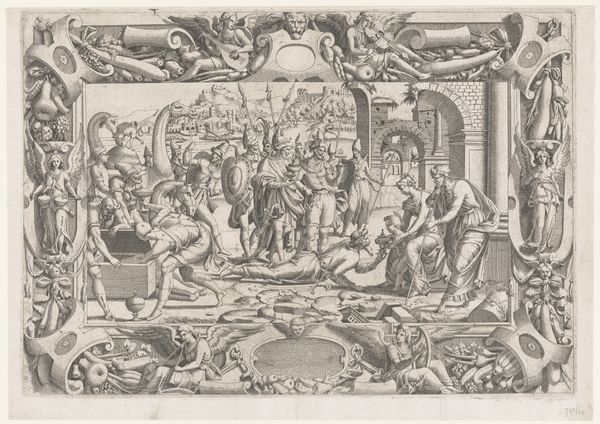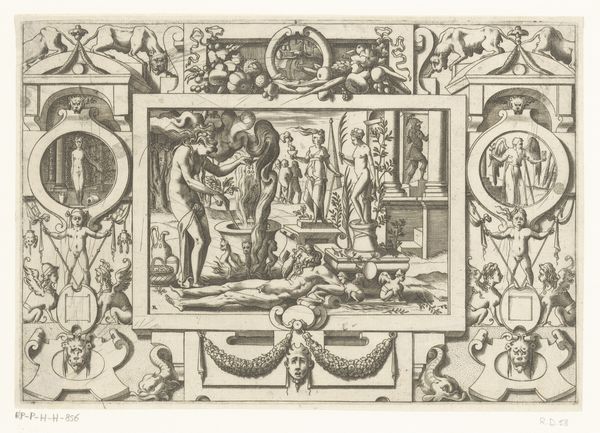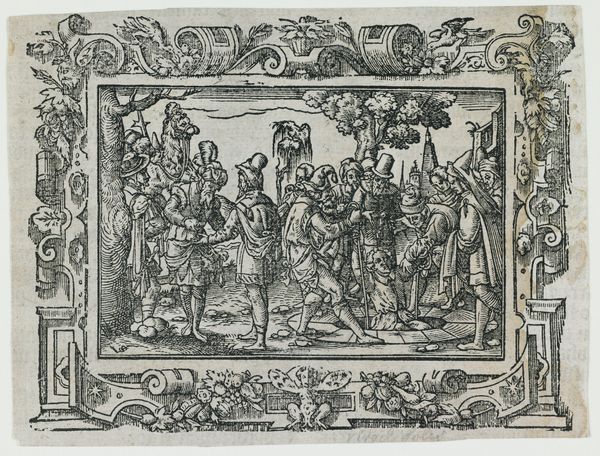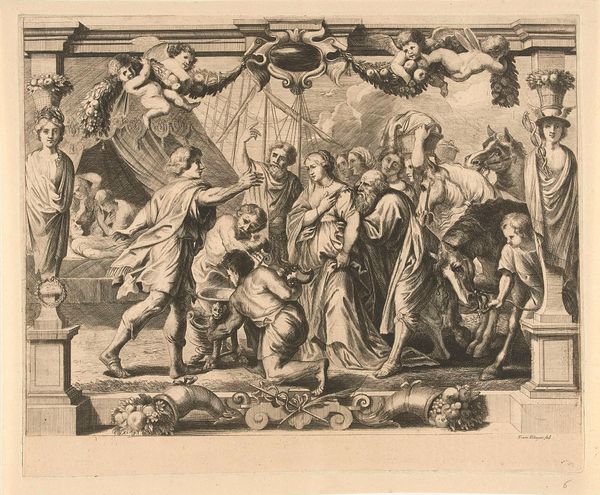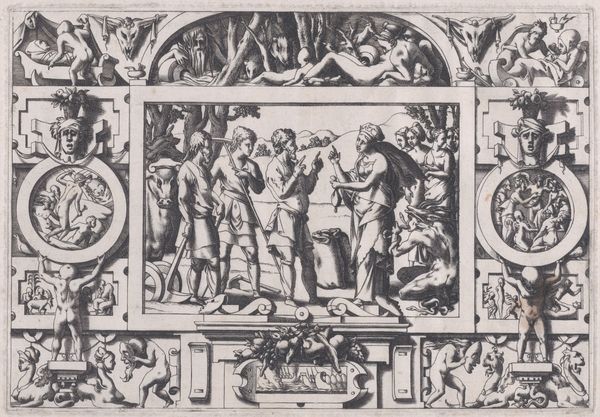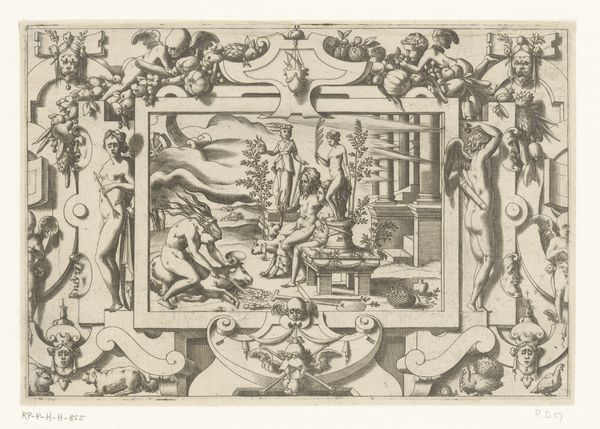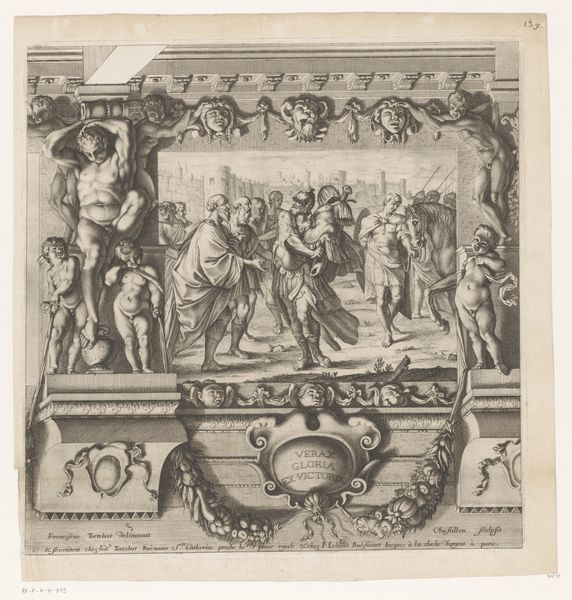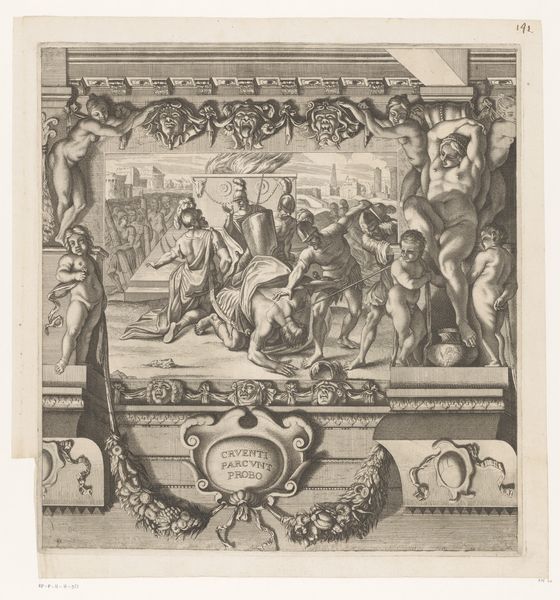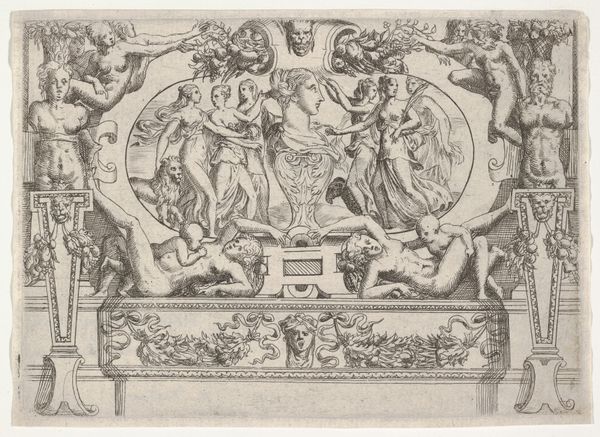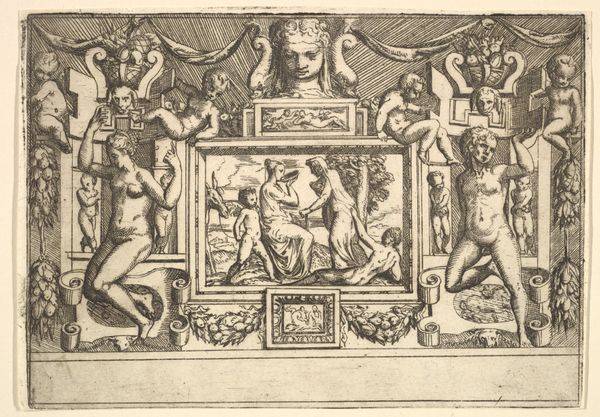
drawing, print, ink, engraving
#
drawing
#
pen drawing
# print
#
figuration
#
ink line art
#
ink
#
line
#
history-painting
#
northern-renaissance
#
engraving
Dimensions: height 160 mm, width 232 mm
Copyright: Rijks Museum: Open Domain
This print, "Jason and Medea Visiting Pelias in Iolcus," was created by René Boyvin in the 16th century using the intaglio technique. This process involves engraving an image into a metal plate, applying ink to the grooves, and then pressing paper against the plate to transfer the design. The fine lines and detailed textures you see here are a direct result of this meticulous process. Each line had to be carefully cut into the metal, a task that required a great amount of skill and time. Boyvin's mastery of the intaglio technique allowed him to create a print that not only tells a story from Greek mythology, but also showcases the artistry of the printmaking tradition. The print is not just about the image, but also about the labor and skill involved in its creation. The act of engraving, inking, and printing was a craft in itself, one that bridges the gap between fine art and manual labor. It reminds us that every artwork is the result of a physical process, and that the materials and techniques used play a crucial role in shaping its meaning.
Comments
No comments
Be the first to comment and join the conversation on the ultimate creative platform.
